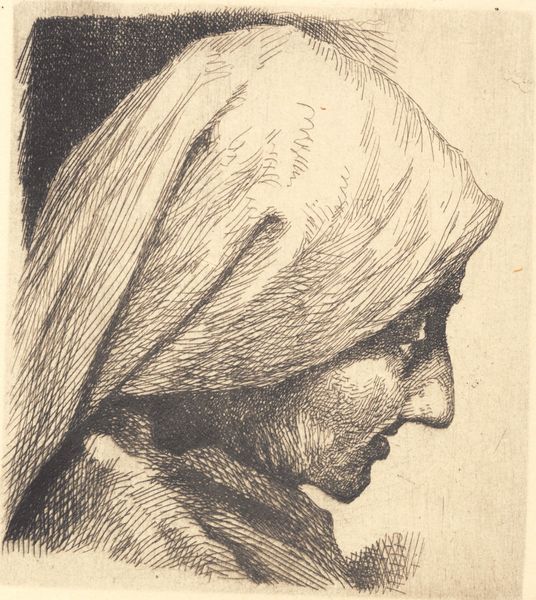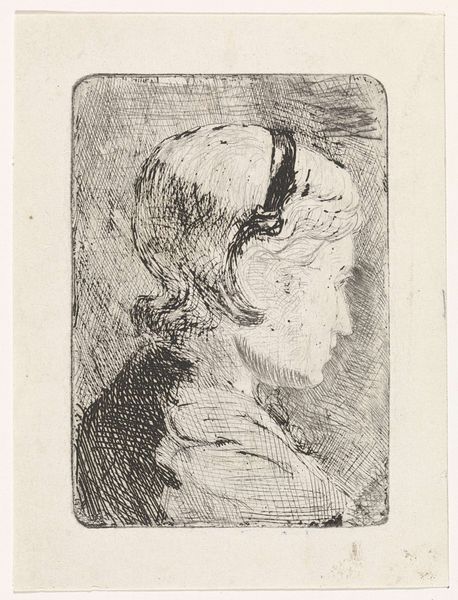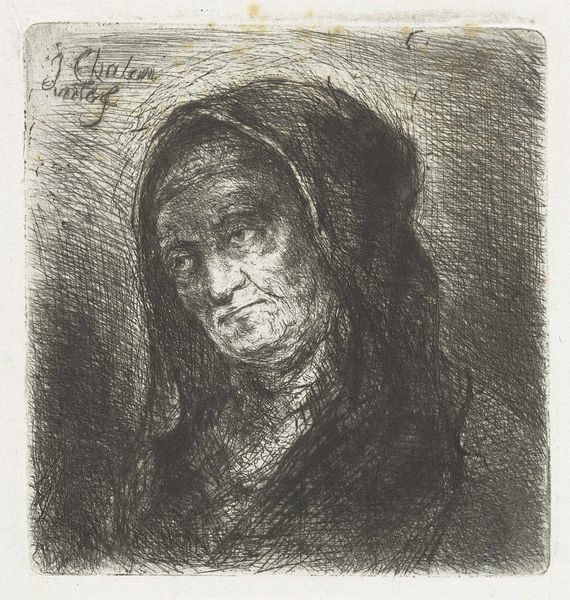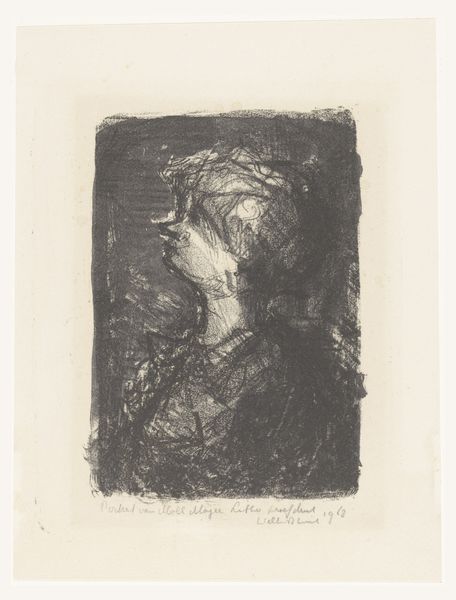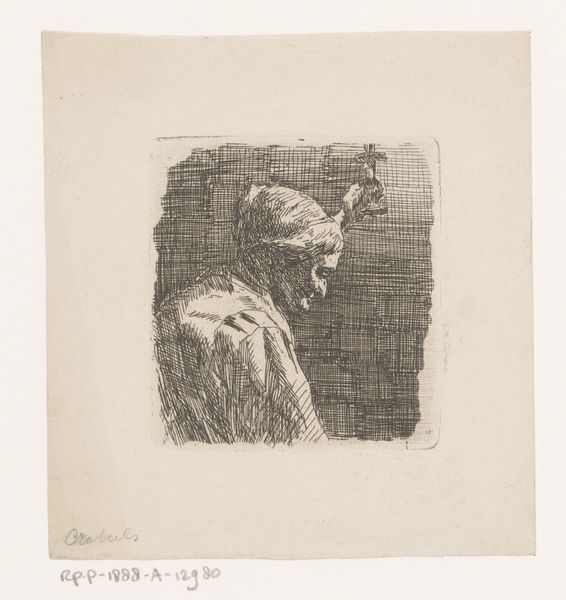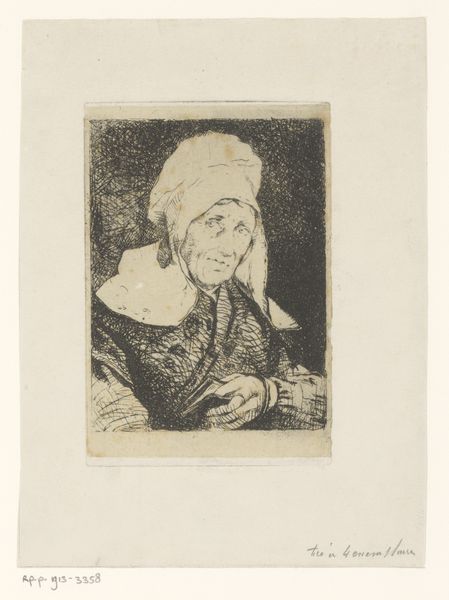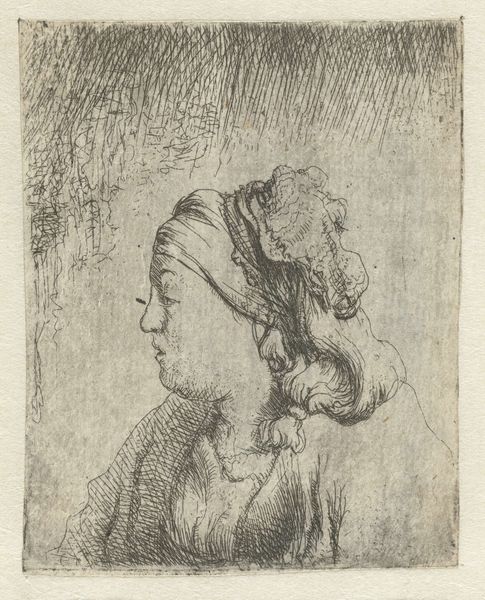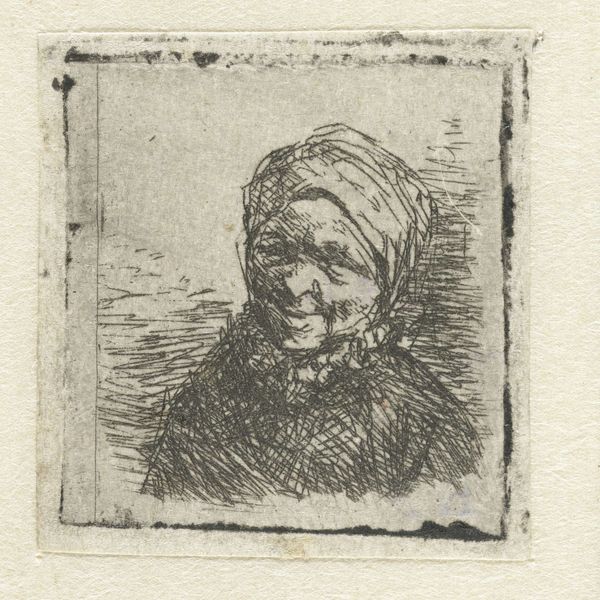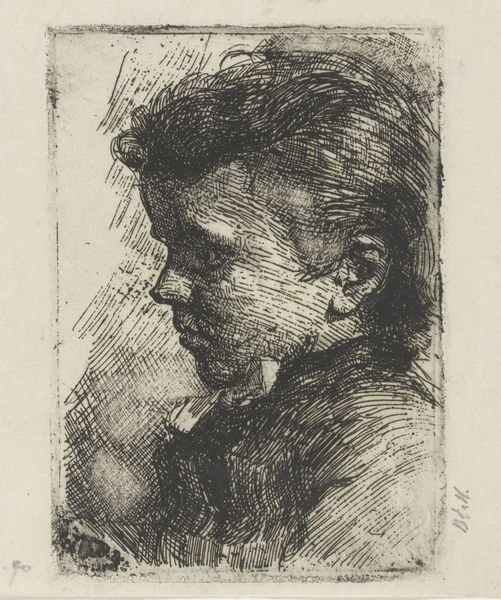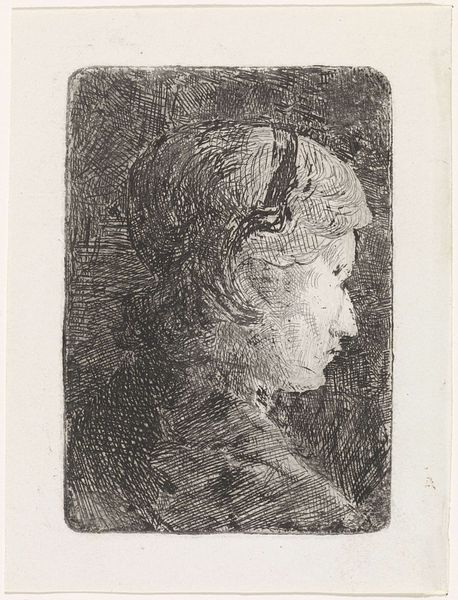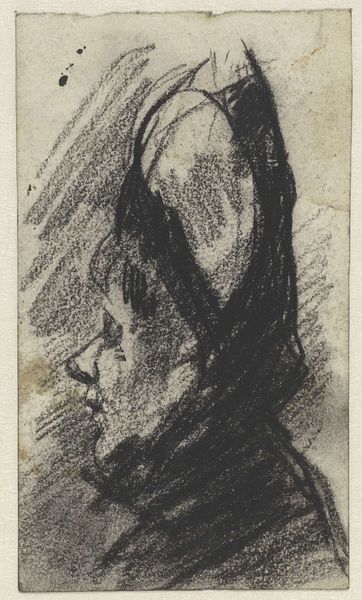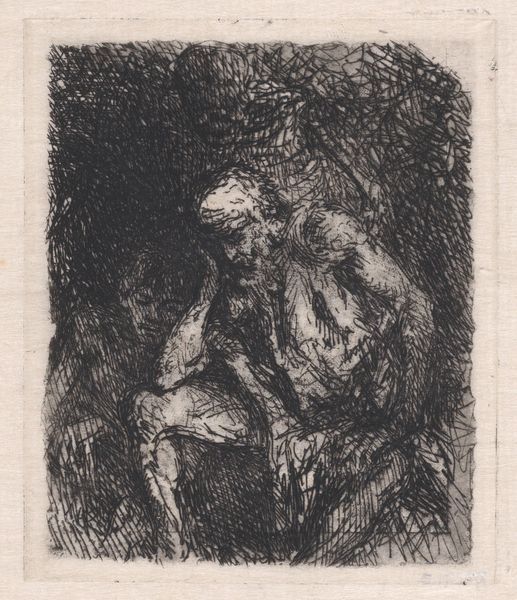
print, etching
#
portrait
#
baroque
# print
#
etching
#
pencil drawing
Dimensions: height 82 mm, width 82 mm
Copyright: Rijks Museum: Open Domain
This etching, held at the Rijksmuseum, depicts a man adorned with a prominent turban. The turban itself, a headdress historically worn across various cultures in the Middle East, South Asia, and Africa, carries a profound symbolic weight. In the East, the turban has roots as a symbol of status and religious affiliation. This motif appears in Renaissance paintings of figures from the Orient as a signifier of the exotic Other. It is important to remember, however, that, during the Renaissance, cultural exchange between Europe and the East was becoming more frequent, bringing with it shifts in perception of foreign cultures. Consider, too, how the motif of the turban has evolved, reappearing in modern fashion. It’s a non-linear, cyclical progression, resurfacing, evolving, and taking on new meanings in different historical contexts. The turban is a powerful force engaging viewers on a deep, subconscious level and conveys intense cultural and social information.
Comments
No comments
Be the first to comment and join the conversation on the ultimate creative platform.
